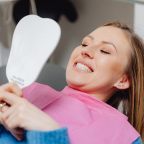
Protecting Your Family from Skin Cancer: Latest Research and Practical Solutions for Devon Residents
Recent research into skin cancer in the UK has raised fresh concerns about how best to protect families from the growing dangers of ultraviolet exposure. With melanoma rates now at their highest recorded levels, doctors are urging people to take a more proactive approach to prevention rather than waiting until symptoms appear.
Figures published this year show a marked rise in diagnoses across the country, with one study suggesting melanoma cases have risen from 21 to 28 per 100,000 people over the past decade. The increase has been seen across several age groups, but the sharpest climb appears in older adults, with those over 80 experiencing the biggest jump. Cancer charities say this mirrors a long-term trend linked to changing travel habits, historic sun-tanning culture, and inconsistent protection over many years.
Alongside this, a recent evaluation led by the University of Exeter examined how new diagnostic pathways – including the use of a UK-approved medical AI system – are helping identify high-risk skin cancers at an earlier stage. In three pilot regions, clinicians recorded a 19–33% increase in the detection of serious cases when using this new system compared with standard care. The researchers noted that earlier identification can make a decisive difference to treatment outcomes, particularly with melanoma, where delays of even a few months can influence survival rates.
Although the findings are encouraging from an NHS point of view, they also highlight a broader issue: detection is improving, but prevention remains an area where much more can be done. Around 90% of melanoma cases are linked to UV exposure, meaning everyday habits continue to drive long-term risk. Dermatologists are now emphasising that awareness needs to stretch beyond the peak of summer and into the quieter months too.
This is especially relevant for families in Devon, where time outdoors is a part of daily life. Whether it is dog-walking along the Exe Estuary, afternoons at Dawlish Warren, or children’s sports clubs at the weekend, exposure can add up long before anyone realises. Many parents can recall a moment when a cloudy day unexpectedly turned into a sunburn situation, largely because UV radiation cuts through cloud cover far more effectively than many people expect.
Several dermatologists point to a particular challenge: people often underestimate the cumulative effect of short, frequent exposures. Ten minutes in the playground after school, a walk to town without a hat, or standing pitch-side at football training can all contribute to long-term skin damage, especially for children whose skin is more delicate. Studies suggest that a significant proportion of lifetime sun damage occurs before the age of 18, which places families on the front line of prevention.
Health charities continue to highlight three core pillars of sun safety. The first is timing: staying in the shade during the strongest UV hours, usually between 11am and 3pm. The second is sunscreen, which remains vital but must be applied generously and topped up regularly – something many adults and children struggle with. The third is protective clothing, which is gaining more attention as families look for long-sleeved tops, hats and swimwear designed to offer consistent coverage without relying solely on sunscreen.
This final point is attracting increasing interest as more research emerges on the limitations of suncream alone. While SPF is crucial, it can rub off in water, sweat or sand; children often miss patches during application; and adults frequently under-apply. Clothing, by contrast, stays in place, and many garments now carry UPF ratings that reflect how effectively they block UV rays. Some parents in Devon, particularly those who spend long hours outdoors or travel to warmer climates during school holidays, are choosing UPF clothing as a routine part of summer packing rather than an afterthought.
One local business taking this message to heart is equatorsun, a family-run brand established after the owner’s mother was diagnosed with melanoma almost two decades ago. Her diagnosis sparked a commitment to making sun protection easier and more reliable for families, leading to a range of UPF clothing, swimwear and hats designed to withstand long days outdoors. The brand has since been reimagined by her son with a renewed focus on education, prevention and long-lasting apparel. More about the story and the range can be found at equatorsun.com.
Local GPs say they are seeing an uptick in patients asking for mole checks, often after spotting changes on holiday photos or from partner observations. While this awareness is encouraging, they stress that checking should happen year-round and that people should familiarise themselves with the “ABCDE” rule for monitoring moles: Asymmetry, Border, Colour, Diameter and Evolution. Any changes should prompt a check-up, especially if a lesion looks different from others.
Looking ahead, experts warn that rising temperatures and more extreme weather patterns could contribute to further increases in skin cancer rates. This makes the issue particularly pressing for communities like those across Devon, where outdoor lifestyles, coastal tourism and countryside activities are part of the region’s identity.
With skin cancer cases continuing to rise and new research highlighting both the value of early detection and the importance of prevention, many families in the South West may find it worthwhile to take another look at their approach to sun protection. A few small adjustments – from protective clothing and hats to better suncream habits and regular skin checks – can make a meaningful difference. As one dermatologist recently put it, “The steps we take today are the ones our future selves will thank us for.”

















